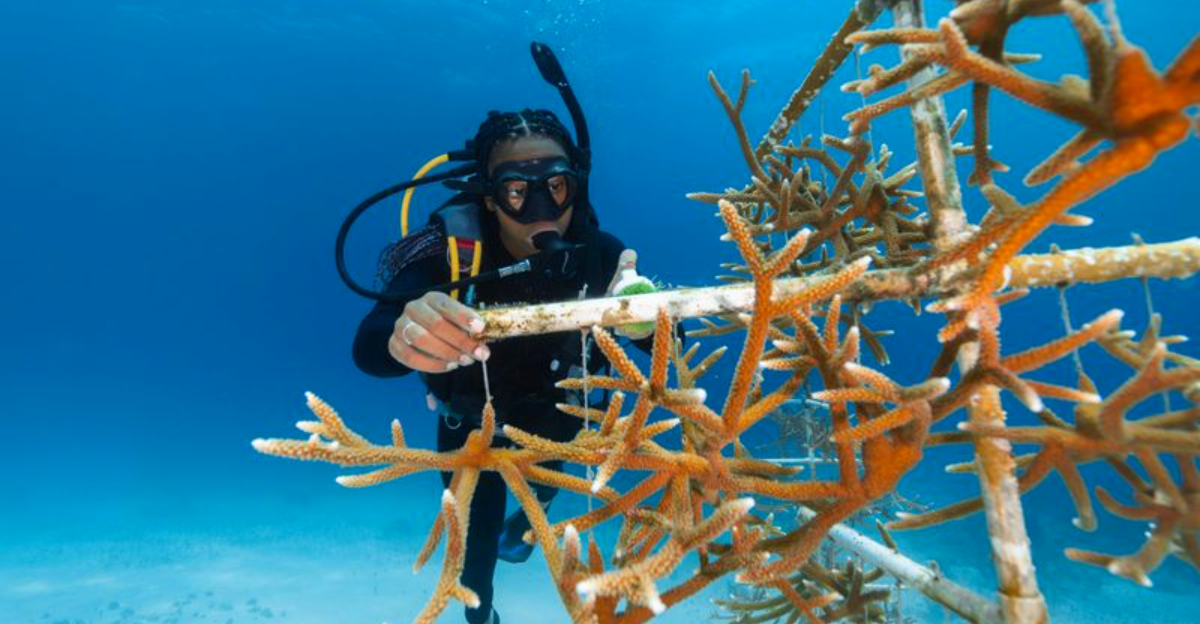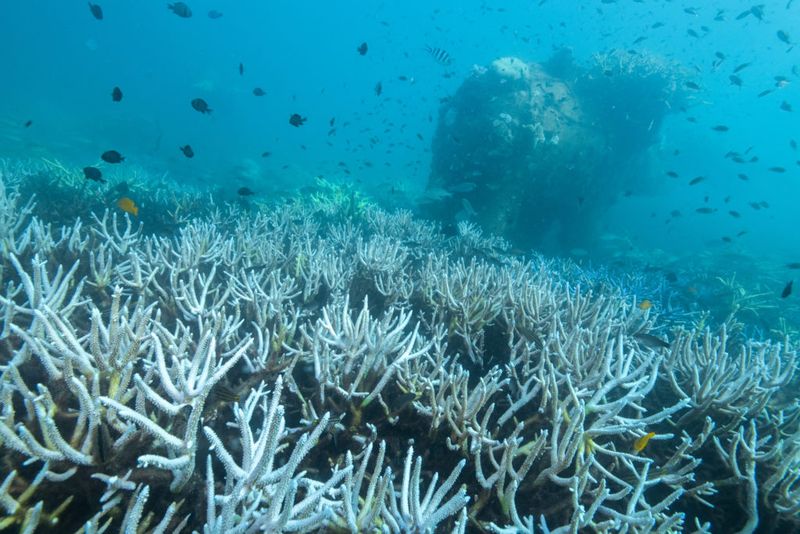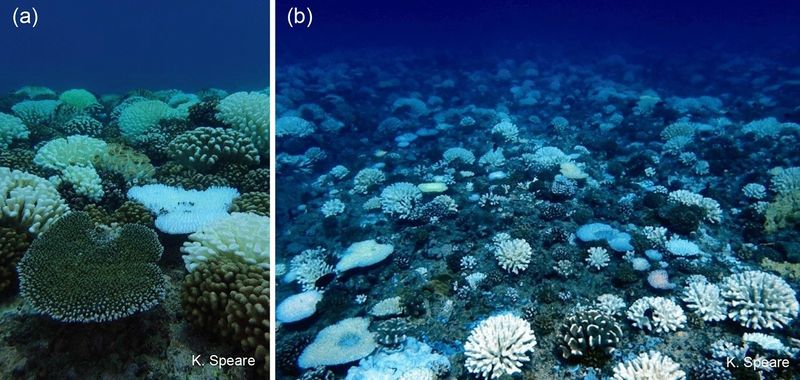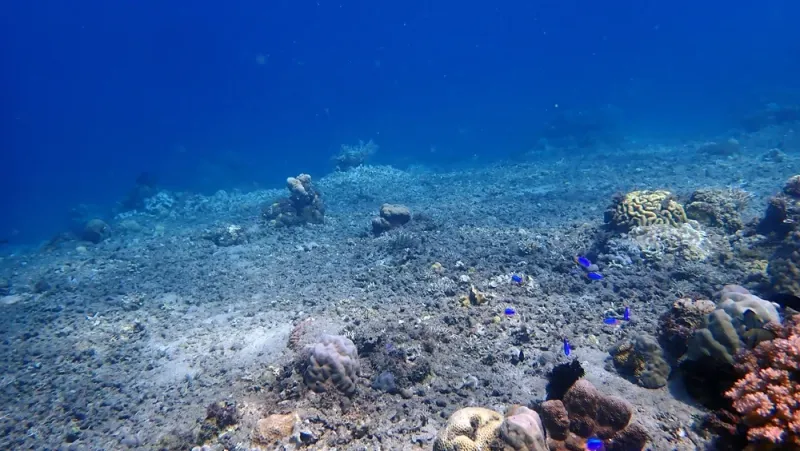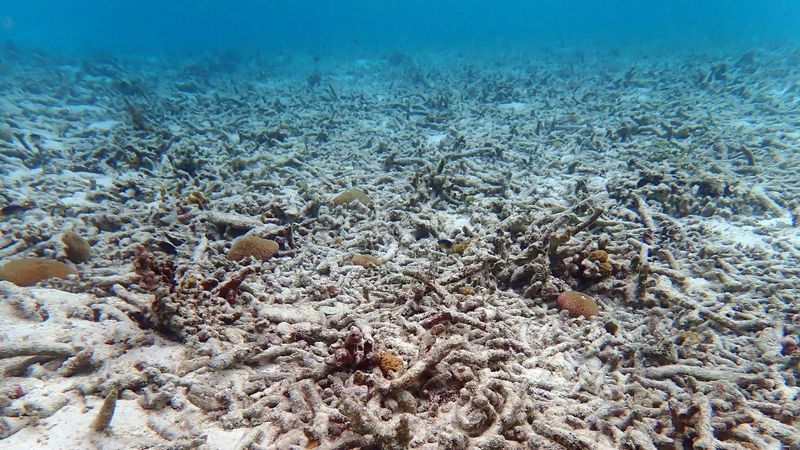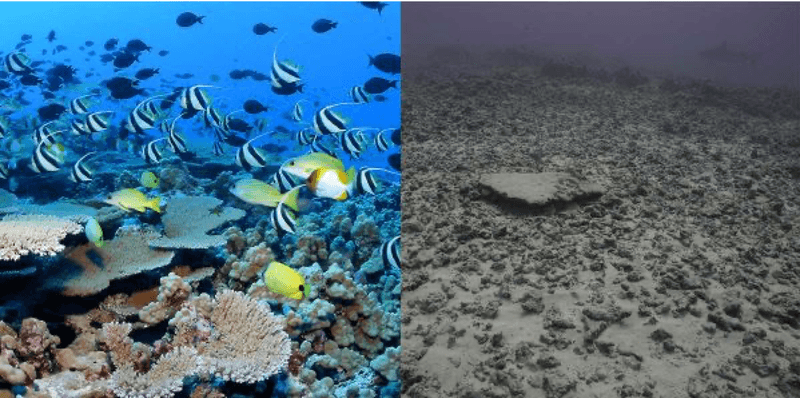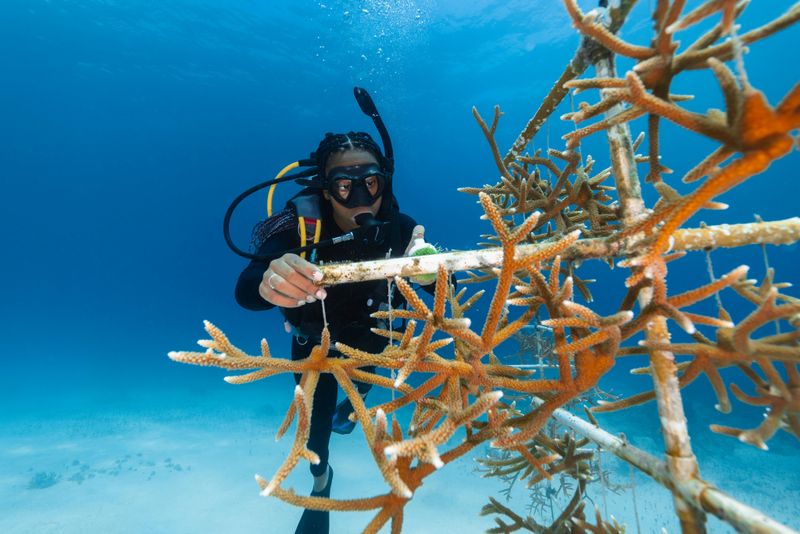Our planet’s coral reefs are facing a crisis unlike anything we’ve seen before. Once vibrant underwater cities teeming with colorful fish and marine life, these ecosystems are now losing their brilliant hues and dying at an alarming rate. Scientists confirm that we’ve crossed a dangerous threshold—coral reefs may no longer be able to bounce back from the damage caused by warming oceans and human activities.
The 2023-2025 Global Bleaching Disaster
Between January 2023 and May 2025, roughly 84% of the world’s coral reefs turned ghostly white in what scientists call a massive bleaching event. This wasn’t just another bad year for reefs. It was the fourth global bleaching disaster ever recorded, but easily the worst in terms of scale and devastation.
Marine heat waves pushed ocean temperatures higher than corals can tolerate, forcing them to expel the tiny algae living inside their tissues. Without these algae, corals lose their color and their main food source. Across the Pacific, Indian, and Atlantic oceans, entire reef systems transformed from vibrant underwater gardens into pale graveyards.
What makes this event particularly frightening is the sheer speed and scope. Previous bleaching episodes affected smaller regions, but this time nearly every major reef system on Earth experienced stress simultaneously, leaving little hope for natural recovery.
Why Recovery Time Has Run Out
Coral reefs used to have time to heal between disasters. A bleaching event would strike, some corals would die, but survivors could slowly rebuild over years or even decades. That safety buffer has vanished. Today’s bleaching events are happening so close together that reefs barely begin recovering before the next heat wave hits.
Scientists compare it to a patient who never fully heals from one injury before suffering another. The 2023-2025 event followed closely on the heels of earlier bleaching disasters in 2014-2017 and 2020. Each time, reefs lose more of their structure and resilience.
Ocean acidification, pollution from runoff, and overfishing compound the problem. These extra stressors mean that even the toughest corals struggle to survive. Models predicted this collapse would happen eventually, but the reality arrived faster than anyone expected.
Half a Billion People Losing Their Lifeline
Around 500 million people worldwide depend on coral reefs for their daily survival. These aren’t just pretty underwater attractions—they’re crucial infrastructure that provides food, income, and protection to coastal communities across the tropics. Fisheries rely on reefs as nurseries where young fish grow up safely before heading to deeper waters.
Tourism industries in places like the Caribbean, Southeast Asia, and the Pacific islands generate billions of dollars from visitors eager to snorkel and explore colorful reefs. When reefs die, those jobs disappear. Even more critically, healthy reefs act as natural breakwaters, absorbing wave energy and shielding coastlines from storm surges and erosion.
As reef frameworks crumble, entire marine ecosystems are shifting. Coral-dominated habitats are being replaced by algae-covered rocks and simpler organisms. This transformation means less biodiversity, fewer fish, and greater vulnerability for millions of people already facing climate challenges.
The Tipping Point Scientists Warned About
For years, researchers cautioned that coral reefs were approaching a dangerous tipping point. That moment has arrived. A major 2025 climate assessment involving over 160 scientists from 23 countries concluded that global warming of approximately 1.2°C above pre-industrial levels has pushed warm-water coral reefs past their survival threshold.
Tipping points represent moments when systems fundamentally change and can’t easily return to their original state. Think of it like a tower of blocks—you can remove a few and it stays standing, but eventually one more block causes the whole structure to topple.
Observations since 2023 show widespread coral death with minimal recovery, supporting the grim conclusion that reefs may no longer bounce back from thermal stress. This isn’t a future prediction anymore. Large-scale reef collapse is actively underway right now, transforming ocean ecosystems in ways that will persist for generations.
From Coral Gardens to Algae Wastelands
Walk through a forest, then imagine it replaced by a parking lot. That’s roughly what’s happening underwater as coral reefs transform into algae-dominated systems. When corals die, opportunistic algae, sponges, and simpler organisms quickly colonize the empty space. These new residents thrive in warmer waters that corals can’t tolerate.
This ecosystem shift has cascading consequences. Coral reefs support incredible biodiversity—more species per square meter than almost any other habitat on Earth. When corals vanish, so do the countless fish, crustaceans, and other creatures that depend on reef structures for shelter and food.
The new algae-covered landscapes support far fewer species and provide less value to humans. Fish populations crash without nursery habitats. Coastal protection weakens as three-dimensional reef structures flatten into rubble. Once this transformation takes hold, reversing it becomes extraordinarily difficult, even if ocean temperatures eventually stabilize.
Fighting for What’s Left
Despite the grim reality, giving up isn’t an option. Scientists emphasize that protecting reef refuges—areas where corals still survive—remains possible if we act immediately. Success requires two parallel efforts: drastically cutting greenhouse gas emissions to slow ocean warming, and managing local stressors like pollution and overfishing.
Innovative restoration projects are underway worldwide. Researchers are using advanced technologies to map vulnerable reefs, identify heat-resistant coral strains, and even grow corals in nurseries before transplanting them to damaged areas. Some teams are experimenting with assisted evolution, breeding corals better adapted to warmer conditions.
Time is the critical factor. Without fast, coordinated global action, most remaining coral reefs could disappear within decades. The window for meaningful intervention is closing rapidly, but it hasn’t shut completely. Every fraction of a degree of warming we prevent and every reef we protect increases the chances that future generations might still experience these magnificent ecosystems.
